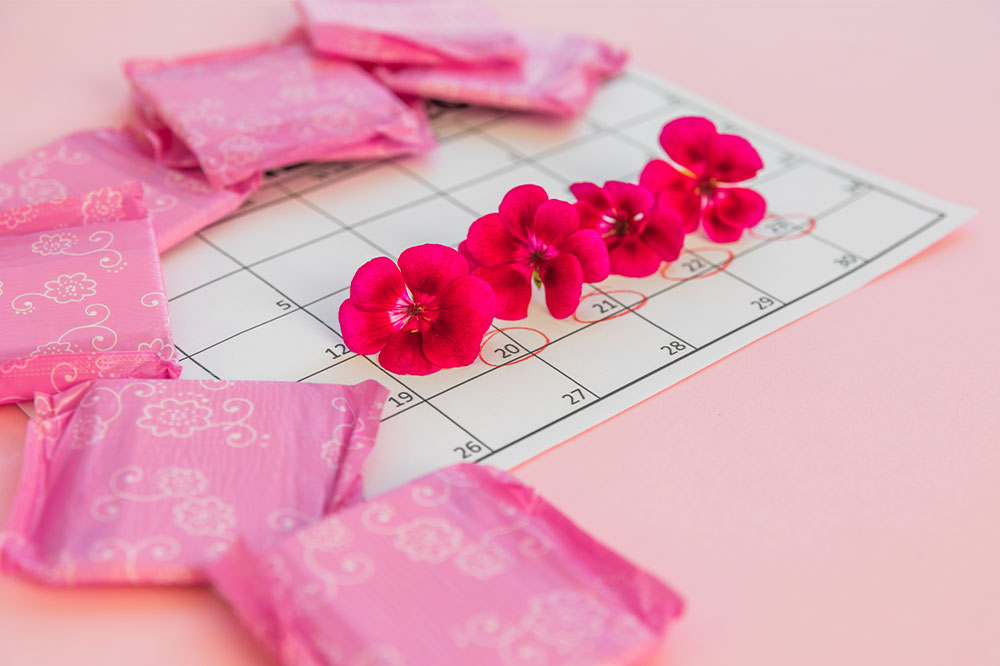
6 useful period products for women
Menstruation is a natural body process where the lining of a woman’s uterus begins to shed and create a discharge of blood and other fluids. It is mainly triggered by hormone changes that occur as part of a monthly period cycle. Women can use several feminine hygiene products as per their preference to prevent the discharge from leaking. Here are the top six period products readily available in the market.
Tampons
Tampons are the most convenient, readily available, and widely used period products for absorbing menstrual discharge. These small cotton tubes mixed with wool are directly inserted into the vagina to prevent blood from leaking out. Cotton is an excellent absorbent material and does not irritate the organ’s lining. Tampons are use-and-throw products that come with applicators that help insert them correctly so one does not feel pain or discomfort. They are available in different sizes to absorb light, medium, or heavy periods, depending on the intensity of the menstrual cycle. But irrespective of the flow, doctors recommend changing tampons every four to six hours to keep the area clean and avoid the risk of a bacterial infection. If one wears a super-absorbent, heavy-flow tampon overnight, they should remove it and clean the area first thing in the morning. A pack of tampons can cost between $4 and $9, depending on the brand and quantity.
Sanitary pads and napkins
Sanitary pads and napkins are the second most widely used period products and a sustainable alternative. One-time-use cotton pads can be worn inside the undergarment and positioned in place to absorb the discharge. They come in different shapes and sizes and are made considering the intensity of the flow. Depending on the quality of the product, pads can cost anywhere between $2 and $8 per piece. Budget sanitary napkins are one-time-use cloth pads that can only be placed over the undergarment. Premium quality napkins have an adhesive strip that secures them to the undergarment and prevents them from moving while walking, sitting, or standing.
Reusable pads and napkins
Reusable pads are similar to regular pads but with a major difference. These pads are made with absorbent cloth-like materials that can be washed and reused a couple of times before disposal. They are more expensive, but some women prefer them if their period discharge is light or moderate and does not require repeatedly changing pads. Like regular sanitary napkins, reusable napkins also come with a snap-on feature to secure the wings to the undergarments. Reusable sanity pads from basic brands cost around $12 per pad. Premium variants cost upward of $35. The only drawback of reusable period products is the extra time and effort that go into washing, rinsing, and drying them for the next use.
Period pants
Where tampons need to be inserted into the vagina to absorb the flow, period pants can be worn as undergarments. They fit like regular pants, come in different sizes, and are modified to absorb light to heavy period flow. Unlike tampons, women do not have to worry about disposing of the undergarments after use, as their fabric is washable and reusable. This makes period pants an environmentally friendly option. However, it is necessary to own a few pairs because, like tampons, period pants must be changed every four to six hours to prevent the risk of infection. Some women use pants as a backup to tampons if their flow is too heavy. Period undergarments are slightly more expensive, with a single piece costing between $25 and $45, depending on the brand and fabric quality. However, its reusability is a cost-saving factor, as one would spend just as much buying a few packs of tampons.
Menstrual cups
These period products are gaining popularity among women of all ages, mainly due to their simplicity and effectiveness. Menstrual cups are less messy and easy to handle, wash, and reuse. They are made with soft prescription-grade silicone, rubber, or even latex. Further, they are reusable and come in various sizes to collect the discharge. Each cup is made of pliable material, so it should not cause major discomfort while inserting and collect blood without leaking. One cup can last a couple of years before doctors suggest changing the product. This makes it one of the most environmentally friendly options to use and dispose of safely. Menstrual cups can cost between $35 and $55 per cup, depending on the brand and the quality of the material used. They can be ordered online or bought from the local health store.
Menstrual discs
Menstrual discs are similar to inserting a tampon to collect the blood flow and discharge but are slightly more invasive and work differently. A menstrual disk consists of a ring and a collection bag. The disc ring must sit properly at the base of the cervix. The soft collection bag in the middle diverts the discharge directly inside so there is no leakage. Both the ring and collection bag are made of prescription-grade materials, making discs pretty safe to use. Menstrual discs are a better alternative to sanitary pads, especially during heavy-duty workouts. Once inserted, they can be worn for a good twelve hours before needing a change. Considering this, menstrual discs seem like the ideal period product for comfort and utility at night too. Disks are also quite affordable, as a single pack with a minimum of eight pieces costs only $11 to $15, depending on the brand.
The market has many period products to help prevent discharge from leaking out during menstruation. Women who are confused about which option is the best for them can consult a health expert. A professional can also suggest the right way to use these products to reduce the risk of infection.





